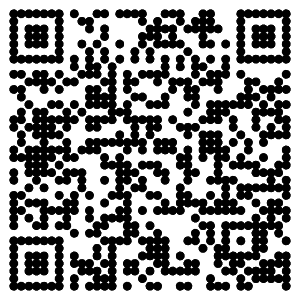BMC Psychiatry
Research article
Association between two distinct executive tasks in schizophrenia: a functional transcranial Doppler sonography study
Deborah Feldmann, Daniel Schuepbach*, Bettina von Rickenbach, Anastasia Theodoridou and Daniel Hell
Address: Psychiatric University Hospital Zurich, Lenggstrasse 31, 8032 Zurich, Switzerland
Email: Deborah Feldmann - feldmanndeborah@access.unizh.ch; Daniel Schuepbach* - daniel.schuepbach@puk.zh.ch; Bettina von Rickenbach - bettina_v_r@hotmail.com; Anastasia Theodoridou - anastasia.theodoridou@puk.zh.ch; Daniel Hell - dhell@bli.unizh.ch * Corresponding author
Published: 24 May 2006
SMC Psychiatry 2006, 6:25 doi: 10.1186/1471-244X-6-25
This article is available from: http://www.biomedcentral.eom/l47l-244X/6/25 ? 2006 Feldmann et al; licensee BioMed Central Ltd.
This is an Open Access article distributed under the terms of the Creative Commons Attribution License fhttp://creativecommons.ory/licenses/by/2.0). which permits unrestricted use, distribution, and reproduction in any medium, provided the original work is properly cited.
Abstract
Background: Schizophrenia is a severe mental disorder involving impairments in executive functioning, which are important cognitive processes that can be assessed by planning tasks such as the Stockings of Cambridge (SOC), and tasks of rule learning/abstraction such as the Wisconsin Card Sorting Test (WCST). We undertook this study to investigate the association between performance during separate phases of SOC and WCST, including mean cerebral blood flow velocity (MFV) measurements in chronic schizophrenia.
Methods: Functional transcranial Doppler sonography (fTCD) was used to assess bilateral MFV changes in the middle (MCA) and anterior (ACA) cerebral arteries. Twenty-two patients with chronic schizophrenia and 20 healthy subjects with similar sociodemographic characteristics performed SOC and WCST during fTCD measurements of the MCA and the ACA. The SOC was varied in terms of easy and difficult problems, and also in terms of separate phases, namely mental planning and movement execution. The WCST performance was assessed separately for maintaining set and set shifting. This allowed us to examine the impact of problem difficulty and the impact of separate phases of a planning task on distinct intervals of WCST. Simultaneous registration of MFV was carried out to investigate the linkage of brain perfusion during the tasks.
Results: In patients, slowing of movement execution during easy problems (SOC) was associated with slowing during maintaining set (WCST) (P < 0.01). In healthy subjects, faster planning and movement execution during predominantly difficult problems were associated with increased performance of WCST during set shifting (P < 0.01). In the MCA, patients showed a significant and positive correlation of MFV between movement execution and WCST (P < 0.01).
Conclusion: The results of this study demonstrate performance and brain perfusion abnormalities in the association pattern of two different tasks of executive functioning in schizophrenia, and they support the notion that executive functions have a pathological functional correlate predominantly in the lateral hemispheres of the brain. This study also underpins the scientific potential of fTCD in assessing brain perfusion in patients with schizophrenia.
Background
In recent years, several studies have described deficits in abstraction, mental flexibility and planning, i.e. executive functions, in patients with schizophrenia [1,2]. The underlying functional substrate has been examined by investigating changes in cerebral perfusion during per?formance of paradigms such as the Wisconsin Card Sort?ing test (WCST) [3] and the Tower of London (TOL) [4], Weinberger et al. [5] found evidence of lower cerebral blood flow (CBF) in prefrontal regions during WCST, and Andreasen et al. [6] observed lower frontal activation dur?ing the TOL. Most of the aforementioned studies have used only one paradigm to examine executive function in schizophrenia, limiting inferences on pathophysiological substrate to the psychometric properties of the applied test. Yet, there is consensus that the term "executive func?tion" is multifaceted, referring to complex cognitive func?tions that connect and control the flow of information between cognitive subsystems, monitoring perceptual inputs and coordinating goal-oriented activity [4,7], Hence, it would be interesting to investigate the linkage between a complex test of executive function such as the WCST, and a somewhat more specific cognitive task in that domain, the Stockings of Cambridge (SOC), a related version of the TOL. One of the appealing features of SOC consists in the fact that distinct phases during a planning process, such as mental planning and execution of a plan, can be assessed. Morris et al. [1] found no significant dif?ference in planning time between patients with schizo?phrenia and healthy controls, but a deficit in accuracy and execution time in patients - results similar to those in patients with frontal lobe lesions [8], Therefore, these authors suggested a frontal lobe involvement during plan?ning within a complex cerebral dysfunction in this disor?der. To the best of our knowledge, there are no studies to date that have investigated the association of perform?ance/brain perfusion between separate phases of a plan?ning task and an abstraction/rule generation task such as the WCST in schizophrenia. The examination of such rela?tionships is interesting because the WCST is a complex multidimensional task that has frequently been applied in schizophrenia [5], Particularly, two distinct and alternat?ing phases of WCST have been described in terms of per?formance and in terms of neurophysiological correlates [9]: the search for a new principle (set shifting) and main?taining a rule (maintaining set). Reaction time (RT) increases during set shifting as compared to maintaining set, reflecting more complex cognitive processes such as the need to change the rule and the inhibition of other rules [9,10]. Based on findings during difficult planning problems of SOC in healthy subjects, where a dispropor?tionate increase in execution time and hence replanning or online planning was observed [11], one may hypothe?size that set shifting during WCST implements features of a replanning strategy, such as task-set activation and inhi?bition. Morice and Delahunty [2], examining WCST, TOL and other tasks of working memory (WM) in schizophre?nia, suggested a failure to acquire the ability toprocess complex information.
Functional transcranial Doppler sonography (fTCD) has been shown to detect specific alterations in MFV during the WCST [10,12,13], the Tower of Hanoi (TOH) [12] and the SOC [11], In a study in patients with schizophrenia, preliminary results suggested reduced MFV in the area of the MCA during performance of the TOH [14]. Cognitive activation studies showed very good agreement between fTCD and functional magnetic resonance imaging (fMRI) [15]. Additional information on fTCD during cognitive challenge has been provided by two extensive reviews [16,17]. Particular advantages of fTCD are good temporal resolution, low restriction and low costs. Concerning research on cognitive paradigms, a major advantage is the fact that cognitive processes do not have to be synchro?nized to the technical specifications of the measurement apparatus. It is of relevance to note that the region of the MCA comprises lateral parts of the frontal, parietal and temporal lobes, whereas that of the ACA involves the medial part of the frontal and parietal lobes, including the frontal pole and also the cingulate gyrus [18] (Fig. 1).
This study addressed the following issues: a) What specific association patterns exist between the performance parameters of SOC and WCST? b) Are there different asso?ciation patterns for schizophrenic patients and healthy subjects? c) What kind of associations between MFV in the relevant paradigms can be found? d) Are there distinct association patterns for patients and healthy subjects?
Methods
Subjects
Twenty-two right-handed patients with chronic schizo?phrenia according to DSM-IV criteria (chart review) were included in this study. Subjects' characteristics are pre?sented in Table 1. All were inpatients and under stable antipsychotic medication (amisulpride, clozapine, flu- pentixol, olanzapine, quetiapine, promazine, risperidone, zuclopenthixol). One patient received an antidepressant (paroxetine). The concomitant medication consisted of biperiden hydrochloride. The following exclusion criteria applied to these patients: 1) affective or organic brain dis-orders, 2) substance abuse for the last 3 months prior to the examination or a lifetime diagnosis of substance dependence, including a positive urine test for psycho?tropic substances, 3) mental retardation, 4) migraine and other headaches. Within 24 hours of fTCD measurements, patients were clinically assessed by means of the Brief Psy?chiatric Rating Scale (BPRS) [19] and the Clinical Global Impression Scale (CGI) [20]. Secondary effects of antipsy- chotics on the extrapyramidal system were examined with
全部?jī)?nèi)容見(jiàn)附件 ![]() Association between two distinct executive tasks in schizophrenia.pdf
Association between two distinct executive tasks in schizophrenia.pdf


